This article has been taken from the latest Fleet News special report Electric Fleet: Taking Charge. It is sponsored by Allstar, Athlon, Northgate and Shell Fleet Solutions.
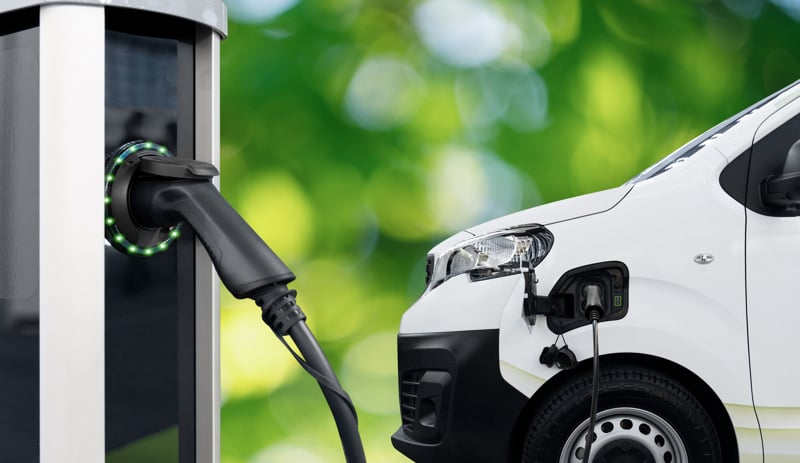
While many organisations have made tremendous progress with electrifying their van fleets, many more remain right at the beginning of their electrification journey.
This is reflected in the proportion of new van sales which are fully electric: although this is growing, latest Society of Motor Manufacturers and Traders (SMMT) figures show just 8.3% of new van registrations in Q1 this year were fully electric.
This caution is understandable, says Simon Simmons, LCV consultant at Alphabet (GB), because if a fleet is a van down, whether due to range or charging, it can have immediate impact on operational efficiency.
“Most companies can ill-afford to take that risk, especially out-of-hours businesses,” he adds.
However, even though fleets will now be able to buy new petrol, diesel or hybrid vans until 2035 following the Government’s clarification earlier this year over the internal combustion engine (ICE) vehicle sales ban, they should not use this as a reason to delay their transition plans.
“If you look at van fleets, they will usually keep a vehicle for three-to-four years; invariably more if they own the vehicle outright,” says Simmons.
“So even though the ICE ban has been extended to 2035 for petrol and diesel vans, you’re only really looking at one, potentially two, renewals during the turnover cycle.
“Even though the changes won’t come into effect for vans for 10 years, fleet operators shouldn’t be sitting back; they should continue to push ahead with their plans to transition their fleet in line with their renewal cycles or age of the vehicle.
“The new mandate merely allows for additional planning time; it does not change the need for fleets to switch from fossil fuel to zero emission vehicles.”
For those fleets who have not yet began operating electric vans, the prospect of transitioning to the zero emission vehicles can be overwhelming.
As well as not being familiar with the new technology, they have to grapple with new issues such as where and how to charge EVs, potentially changing operational duties and having to overcome potential driver reluctance – all at the same time as maintaining operational efficiency.
But there are a number of key actions to take which will make the transition as smooth as possible.
Analyse fleet profile
An important first step is to look at an organisation’s fleet profile – analysing what vehicles it has and what they do operationally, including mileage, location and routes.
This is best done through using data from the vehicles’ telematics systems – if fitted – over a period of several months, looking at information such as daily mileage, trip frequency, where the van stops and dwell times.
“Vans covering 100 miles per day in urban areas and returning to a depot overnight are typically ideal for transition,” says Chris Horbowyj, UK commercial director at Targa Viasat UK.
“On average, around 60% of vans in a mixed fleet can transition to electric without major operational changes, allowing fleet managers to scale up EV volumes efficiently while minimising disruption and reducing the total cost of ownership.”
Horbowyj adds fleets may find many parts of their van fleets are not yet suitable for full electrification, and this may be down to a number of reasons, such as long-distance routes, operating in rural areas or heavy payloads.
“In these cases, fleet managers should focus on transitional strategies, like hybrid models or optimised ICE use,” he says.
“The UK Government’s decision to allow ICE van sales until 2035 offers welcome clarity, giving fleet operators time to adapt gradually, invest in charging infrastructure, retrain drivers, adapt operational models and introduce EVs where most practical first.”
Michelle Miles, head of Progreen, says after analysis of the vehicles and how they are used is carried out, a fleet operator should look at where and when electric alternatives would be charging.
If the vans are taken home by the employees each day, then charging may be at their dwelling if they have off-road parking.
If the business operates a back-to-base model then it may need to install workplace charging infrastructure.
Using the public charging network is a further option but one which many operators feel is not sufficient for vans – many bays are too small or inaccessible to high roof LCVs, for example.
“Then you can start to understand what vehicles you need and look at what’s available on the market. This ensures the vehicles will meet your needs and that they can be charged,” Miles adds.
“These are the first steps before you start doing anything; they are absolutely critical for electrification to work.”
Compile a detailed plan
These findings should be used to compile a detailed plan, which should include all stages of the transition to fully-electric, including implementing charging infrastructure and realistic timelines, says Simon Staton, client management director at Venson Automotive Solutions.
Fleet operators also need to get buy-in from the business for a successful transition.
“Having decision-makers on board from the outset will be invaluable later, so present your case and the business benefits clearly, and keep them updated as plans develop,” adds Staton.
Winning driver buy-in for zero-emission vehicles is also key.
“There’s often a feeling among van drivers of being forced to go electric,” says James Rooney, head of road fleet at Network Rail.
“They are not driving EVs because there are tax benefits or because it’s a pretty new BMW, they’re doing it because electrification is happening. A lot of the time it’s resistance, resistance, resistance.”
A common way fleets work to overcome this is to identify any EV driver who is enthusiastic about their vehicle and make them an ‘EV ambassador’.
In this informal role, they will be used to share their experiences of the technology, as well as answering any questions from colleagues about the technology.
These drivers are often seen as perhaps more credible than an organisation’s senior staff when it comes to answering questions honestly.
“Find someone who has an EV and loves it because their infectious spirit means they will talk to others about it, they’ll take people out in it,” says Rooney, who is working to have an EV ambassador at each of Network Rail’s depots.
“This helps to knock down any fear because they’ve been exposed to the technology.”
Organisations can also distribute internal communications to drivers to educate them about the vehicles, while training should be carried out to familiarise them with the new technology.
Fleets should also consider a pilot scheme before beginning a large-scale transition.
“A small-scale test run transition will help show up any details that have been missed, and pain points that could be difficult once the scheme is active for the whole fleet,” says Staton.
Tom Middleditch, head of electric mobility at Europcar Mobility Group UK, agrees the best way to understand if electric is going to work for certain parts of an organisation’s fleet is to experience it.
“Not only will this help a business to understand any operational adjustments that might need to be made; it will also help win the hearts and minds of drivers,” he says.
“Electric mobility represents a change for them, but it comes with benefits in the driving experience.
“So right now, organisations should be looking for the opportunities to test and learn how electric vans could be part of their fleet in a real-world environment without lengthy or expensive commitments.
With the ban on the sale new petrol or diesel vehicles just one or two replacement cycles away, transitioning to an electric fleet is at the top of the agenda for the majority of fleet decision-makers.
But the switch to the zero-emission technology is fraught with obstacles – especially for van operators who face legislative issues as well as vehicle suitability and charging.
In our new Electric Fleet: Taking Charge report, we look in detail about how you can start the journey to van electrification and speak to those already well advanced in their transition about the innovative ways in which they overcome some of the problems.
Employing industry experts and scientific research, we also bust some myths about batteries – spoiler alert, the average level of degradation at 1.8% a year is much lower than many predicted - and look at the technologies poised to come to market promising greater range and faster charging.
The report is sponsored by Allstar, Athlon, Northgate and Shell Fleet Solutions.
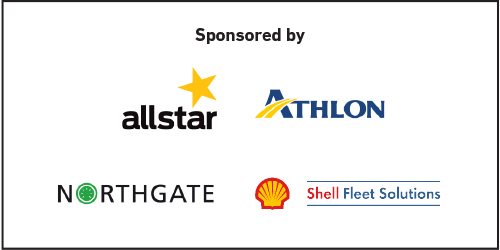

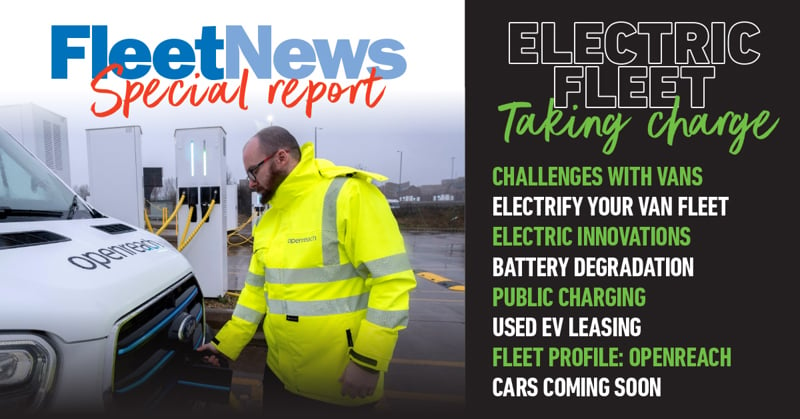
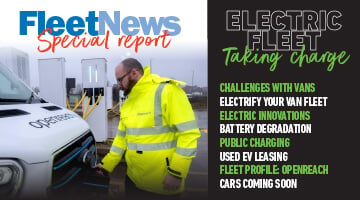



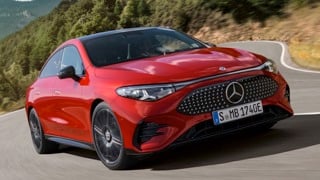
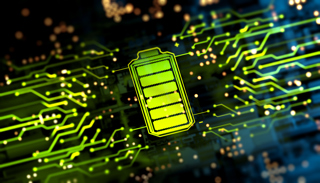

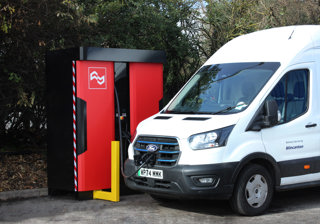





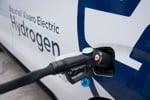

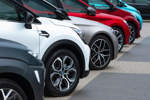

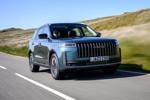
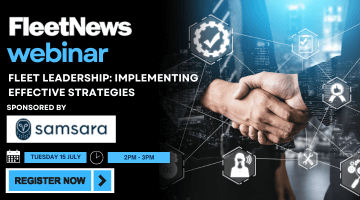
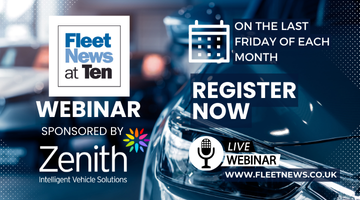
Login to comment
Comments
No comments have been made yet.